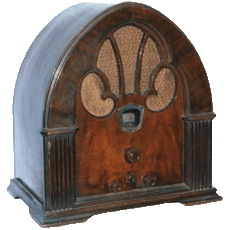I am not looking for parts for my Philco(knock on repwood) in this instance, but am scrounging parts for a project to repro a regen circuit. So I go to hamfests, swapmeets, etc. but I must be hitting the wrong ones. Got plenty of authentic caps, variables, rheostats, xfmrs, etc. but I am completely lacking in resources for early style resistors. Don't need many for a two tube early 30's regen radio repro, but the commercial sellers carry modern carbon comps for restoration purposes. Who has either NOS or even not unusable used, old style resistors for sale? I want this thing to look plausably authentic. Thanks.
Posts: 272
Threads: 12
Joined: Nov 2005
City: Nashville, TN
Hi Tom,
I have a few dogbone type (Body End Dot ) type of resistors, but they are generally way off on the values.
Even some that have never been installed.
I know some members have made a mold and encased new parts insude the molded material. Was it Syl or...??
Yes it was, and here is a link to wonderful tutorial he wrote to make them. That might be an option for a more reliable reproduction.
http://www.radiomuseum.org/forum/replica...stors.html
Otherwise if you use genuine dogbones you'd have to Ohm around and find the right values, then repaint the resistor. Chances are that it will continue to drift though.
Good lcuk!
Gary.
WOOF! Lotta work for a bone! How about this? How prevalent were the Electrad red resistors? I found one of those attached to an old Pilot tin box cap(1930) that I rebuilt. Turns out to be a small cardboard tube the size of a drinking straw, with end caps flush inside. Painted red, then they put a little yellow paper label on it, with the name and value printed. I think I could make the tube from paper or plastic straws(last resort) and insert a modern half watt inside easily. Cap the ends, paint it red, and replicate the label sticker on my printer. I pulled the inside out, and it looks like a WW on some flexible core. Looks like a little red firecracker! Was that a common brand, or just made for certain types, like for power? OK on the value drift, perhaps they were all trashed long ago. Tnx for replies.
Posts: 893
Threads: 9
Joined: Mar 2008
City: Vieques, PR USA
State, Province, Country: PR
In those days they used wirewound units more times than not for low values since the manufacturing of carbon resistors wasn't particularly well refined. Flex resistors like you are describing were handy for tight spots and the fact that they were wirewound gives them some power handling capability, moreso than a carbon of equivalent size. You see them often as the cathode resistor in audio amp stages...and in car radios where they could be bent to fit a tight space.
Wirewounds don't drift in value but these flexi ones are notorious for breaking internally and going open.
Well the WW one was 400 ohms, reads around 425, and was across a 1 uF paper cap. Looking in one of my books, a circuit from the early 30's calls for that exact combo on the tube cathode, so that explains what it was used for. Well I guess maybe I will have to settle for some of those 40's style rough texture looking carbon resistors as you can buy them easily. Or maybe I will stick with 20's radios(just grid leaks) and postwar(easy to get stuff).
Posts: 93
Threads: 10
Joined: Jan 2006
gary rabbitt Wrote:Yes it was, and here is a link to wonderful tutorial he wrote to make them.
Thanks for the kind words Gary. A lot of credit goes to my good buddy
Dennis Daly whom helped me re-write the article in proper english.
Syl
Posts: 13,776
Threads: 580
Joined: Sep 2005
City: Ferdinand
State, Province, Country: Indiana
Syl's "How-To" articles are wonderful resources, and he is a great guy. I truly feel privileged to have many of his articles posted here on the Philco Phorum.
--
Ron Ramirez
Ferdinand IN
Posts: 181
Threads: 0
Joined: Mar 2008
City: Pocasset, MA
I have a cigar box or two of dogbones, and if you only need a few, I'm sure I can spare them. Trick is, they may not measure within tolerance, and if I have to go through a bunch with an ohmmeter it gets old fast. If the exact value doesn't matter, drop me a line: adouglas (at) gis.net



![[-] [-]](https://philcoradio.com/phorum/images/bootbb/collapse.png)


